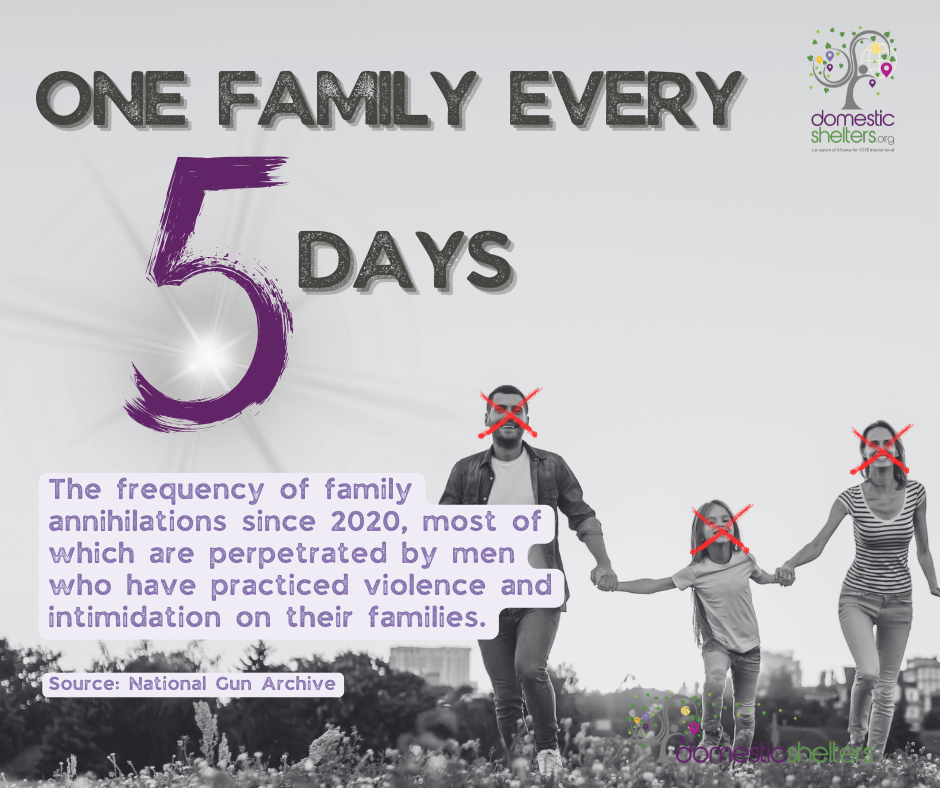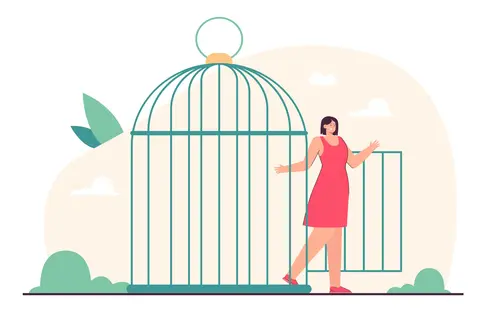1. Select a discrete app icon.

notes
Familicide: When Domestic Abusers Kill Their Families and Sometimes, Themselves
Abusers only rarely kill their partner and children, but just the idea is terrifying
- Jun 04, 2025

Key Points:
- More than three women in the U.S. are killed each day by their current or former boyfriends or husbands.
- Familicide or Family Annihilation—where multiple family members are killed—occurs about once every five days in the U.S. This is a higher rate than in most other wealthy countries, due to the relatively easy access to firearms.
- Abusers who threaten to kill themselves, their victims, or others—must be taken extremely seriously, especially if they have access to a gun. These threats are evidence of a heightened risk for homicide.
What could be more frightening than worrying that your partner could kill you and your children? This threat hangs heavy over many domestic violence survivors. Let’s review the problem and figure out some ways to reduce risk. First, let’s learn some grisly but important terms.
Terms for Family Homicide
Familicide or Family Annihilation
These terms refer to a person killing multiple close family members in quick succession, most often their spouse and children. Because the killers in these cases are almost always men, some people use this term only to describe fathers who murder their current or former partners, along with their children or stepchildren. Sometimes these individuals kill other family members, known people, strangers or themselves, after murdering their partners and children. In fact, most mass murders are perpetrated by men who have practiced their violence and intimidation on their families. The Indy Star newspaper did a thorough investigation of family annihilations in 2023, with data from the Gun Violence Archive, and found that one occurred every five days in the U.S. since 2020. In a map, this article also shows a correlation between the states where family annihilations most often occurred, and lax gun laws.
Intimate Partner or Domestic Violence Homicide
These terms refer to when domestic abusers kill their intimate partners, or when the victims kill the abuser. When men kill their wives and girlfriends, most often it is after years of abusing them. When women kill their husbands or boyfriends, most often it is after years of being abused by them. It is harder to determine the gender effects in same-sex relationships and in relationships where one or more people are trans because of the scarcity of research.
Intimate Partner (IP) Homicide-Suicide
This describes when a person kills their current or former intimate partner and then themself. These events occur on average once daily in the U.S., and 95 percent of the time they involve a man killing his female partner. (These statistics don’t even include incidents where the homicide or suicide attempt fails, resulting in injury but not death.)
Terror
Inducing terror is the chief aim of domestic abuse because it leads to submission. As domestic violence survivors have told me, the only thing scarier than the thought that their abuser could kill them is the thought that the abuser could kill their children, too.

How Common Is Family Annihilation?
A National Institute of Justice report called IP homicide-suicides “mercifully rare,” but some experts in the field disagree, seeing an abusive partner kill their partner and/or children far too often. Most recently, a case of family annihilation made the news when a father from Washington state murdered his three young daughters. He shared custody of the children with the mother, though it was unclear if there was a history of domestic abuse.
Most domestic abusers do not kill anyone. However, some do, and women are five times more likely to be killed by a current or former intimate partner than men. Sometimes, after killing everyone else, abusers turn their weapons on themselves. The weapons in these acts are guns about 90 percent of the time. When guns are not used, abusers may strangle or poison their victims, light the house on fire, or use mixed methods. And 91 percent of the perpetrators of familicide are men.
Red Flags and Timing
Researchers know some red flags that indicate a greater risk of a domestic abuser committing murder. These include a history of coercive control, forcing sex or strangling his partner. Access to guns, threatening his partner with a weapon and threatening to commit suicide also raise the risk profile. Looking into IP homicide-suicide specifically, additional risk factors include a history of domestic violence combined with unemployment.
In his research on men who kill their partners, David Adams, Ed.D. found that many of the men who commit murder-suicide or familicide fit the same profile as those who kill just their intimate partners. “A jealous substance abuser with a gun poses a particularly deadly combination of factors,” he said.
One study found that over a third of murder-suicide perpetrators tested positive for alcohol at the time they committed the fatal acts. It's important to note that this leaves two thirds who were not drinking when they picked up their gun. Some of them may have been intoxicated with other substances, but most were sober.
The same study found that a third of these homicide-suicides occurred when the victim and perpetrator were in the process of breaking up, usually when the woman in the relationship was leaving the man. “These findings suggest that more resources are needed to protect women during the process of divorce or separation, especially if their partners have histories of domestic violence and are making threats.”
It's not that easy to tell whether a domestic abuser is more at risk for suicide, murder-suicide or homicide alone. Researchers warn that while violent reactions to breakups, histories of domestic violence, jealousy and homicidal threats toward victims are highly common among DV homicide-suicide perpetrators, they are also common among other male domestic violence perpetrators who do not end up killing their victims.
Timing is important when survivors are ready to leave. The most dangerous times for a domestic violence victim are when she is in the process of leaving, has recently left a domestic abuser or when the abuser realizes the survivor is not coming back. The risk stays high for 18 months after the breakup. This does not mean that staying with an abuser is the safer path. Rather, it means that domestic violence victims need support and safety planning to make sure they can get away safely.
What Can You Do If You’re in Danger?
If you are concerned that your current or former intimate partner might kill you, contact your local domestic violence agency and ask for a safety plan. If you're in immediate danger, call the police and/or get to a safe place as soon as you can.
Also ask the domestic violence agency or the police for a danger assessment. It is important to know your risk so you can decide what steps to take. The police will take your case more seriously if they can see that your risk level is high. If you are seeking a protective order, or if you have child custody issues in the future, the judge may take into account this lethality assessment (sometimes also called a danger assessment) in reaching a decision.
Learn more about domestic violence assessment tools.
- Seek Help Early. The earlier in the relationship that you can seek the assistance of a domestic violence advocate, the more likely you are to be able to end the relationship safely. Over time, the abuser’s control will weaken you physically, psychologically and financially. You are also likely to become isolated. Do not worry that you are imagining or exaggerating things, and do not allow anyone to force or manipulate you to remain in a relationship that makes you feel uncomfortable or unsafe.
- Take Threats to Harm Others Seriously. Abusers who make threats to kill must be taken seriously. This is equally true whether the abuser threatens to kill you, kill someone else or kill themselves. Even veiled threats raise the risk level. For instance, it is deeply concerning if a domestic abuser says, “You won’t see me around much longer” or “I would hate to see the kids grow up without a mother.”
- Take Threats of Suicide Seriously. Suicidal threats communicate an abuser’s violent intent. Suicidal threats correlate with homicides and suicide/homicides; women whose partners threatened or attempted suicide were 133 percent more likely than other abused women to be killed by those partners.
- Understand the Risk Posed by Firearms. Both suicide and homicide are much more likely in a home with a gun. Ninety-two percent of IP homicide-suicides are committed with guns. When Adams asked incarcerated men who had committed IP homicide if they would have used another weapon if a gun were not available, most said, “No.”
Guns are efficient killing instruments, they can be used impulsively and are often used to terrorize and threaten. The U.S. has an unusually high rate of IP homicides and familicides due to the easy accessibility to guns. States that have more restrictive gun laws (including removing guns from domestic violence perpetrators) have lower rates of homicides and suicides.
If you’re a survivor whose abusive partner has access to a gun, you’re at risk, any other people close to you may be in danger, too. It’s important to always take an abuser’s threats seriously. Consider reaching out to a trained domestic violence advocate today (even if you’re not ready to leave) to create a safety plan or talk about obtaining a protection order and/or an extreme risk protection order, or ERPO, which removes guns from someone who is a danger to themself or others.
Donate and change a life
Your support gives hope and help to victims of domestic violence every day.







